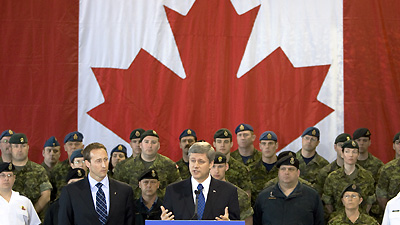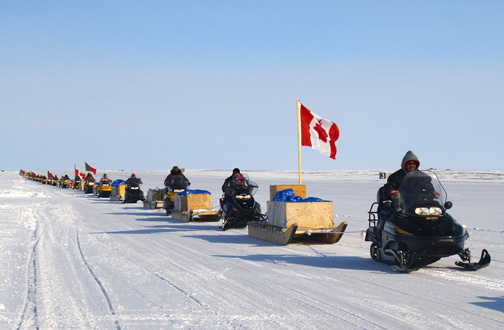The Canadian Forces Reserves face a number of important challenges, including pay, equipment, infrastructure, recruiting, and veterans’ benefits. However, in addition to these everyday issues it is important to consider the fundamental strategic question: what is the purpose of the Reserves within the Forces? Contemporary debate reveals that there are in fact three distinct answers to this question: full mobilization, augmenting the Forces, and complementing the skills of the Regular Force.

From the 19th century until the end of the Cold War, the Reserves, or the militia as they were once known, served as a base for mobilization and to augment the regular military. During the 19th century, there were militia units throughout Canada. While primarily intended for service in the event of an American invasion, the militia also responded to domestic contingencies, such as when Prime Minister Sir John A. Macdonald mobilized the militia to suppress the North-West Rebellion in 1885. Subsequently, the militia served as a base for total mobilization during the two World Wars.
Even during the Cold War, the Reserves were still intended to serve as a base for mass mobilization to rush troops to defend Western Europe and fulfill Canada’s NATO commitments in the event of a Soviet invasion.The end of the Cold War removed the threat of a massive war between great powers in Europe, and thus made the Reserves’ role as a base for mass mobilization less relevant. Thus, as Rear-Admiral Jennifer Bennett testified in 2013, the Reserves shifted from augmenting the Regular Force and serving as a base for mobilization to a force much more integrated with the Regular Force and which complemented the skills of the Regular Force. This approach is known as the Total Force Concept, and emphasizes a more blended military in which training standards for Regulars and Reservists are the same. Indeed, the 2008 Canada First Defence Strategy endorsed the Total Force Concept in its call to integrate Regulars, Reserves, and civilian employees into “a motivated and effective Defence team.”
Still, it is important to understand exactly how the Reserves should complement the Regular Force. As Senator Joseph A. Day pointedly asked Bennett, “Are you suggesting that the Reserves are going to have skills that are not in the Regular Force now?” In fact, as Bennett explained, Canada’s experience fighting in Afghanistan taught the military leadership that the Reserves do have unique skills. While the Reserves’ importance in civil-military cooperation has long been understood, in Afghanistan the Forces realized that Reservists could make important contributions as police officers, engineers, and contractors drawing on their civilian expertise. In addition, the Paul Martin government’s 2005 International Policy Statement (IPS) on Defence recognized that the Reserves’ unique mix of military and non-military skills made them ideally suited for responding to domestic emergencies. Thus, far from simply adding troops to top up Regular Force formations, in an integrated force the Reserves can use their civilian experience and expertise to fill key skill gaps in the Regular Force.
 Despite the move from purely augmenting the Regular Force to complementing its skills, some argue that the Reserves should still have a role as a base for mobilization. Lieutenant Colonel John Selkirk, the Executive Director of Reserves 2000, testified in 2013 that owing to the small size of the Army field force, the Reserves should still be able to mobilize as an “insurance policy” in the event of a future crisis. When pressed by Senator Grant Mitchell, Selkirk emphasized that while a large-scale conventional war was unlikely the Reserves would be very useful in countering terrorism targeting vulnerable Canadian infrastructure, which he deemed “the biggest threat to our way of life.”
Despite the move from purely augmenting the Regular Force to complementing its skills, some argue that the Reserves should still have a role as a base for mobilization. Lieutenant Colonel John Selkirk, the Executive Director of Reserves 2000, testified in 2013 that owing to the small size of the Army field force, the Reserves should still be able to mobilize as an “insurance policy” in the event of a future crisis. When pressed by Senator Grant Mitchell, Selkirk emphasized that while a large-scale conventional war was unlikely the Reserves would be very useful in countering terrorism targeting vulnerable Canadian infrastructure, which he deemed “the biggest threat to our way of life.”
Selkirk is not wrong to point out the important role the Reserves can and should play in domestic counter-terrorism operations. As the 2005 IPS on Defence noted, owing to their nationwide presence, expertise in civil-military cooperation, and training in response to chemical, biological, and nuclear disasters, the Reserves have a key role to play in supporting civilian authorities in the event of a terrorist attack. Likewise, he rightly points out in his testimony the need to supply Reserve formations with enough vehicles and other necessary equipment that they can quickly and effectively deploy.
Nevertheless, Selkirk’s argument that the Reserves should serve as a base for mass mobilization in response to terrorism on Canadian soil does not stand up to careful scrutiny. Selkirk argues that the 12,000 deployable troops in the army field force would be insufficient to handle terrorist incidents, but in fact the potential terrorist attacks on power lines and bridges he describes would not likely require tens of thousands of troops to respond to. He does argue that to guard bridges and power lines against such attacks “it takes a tremendous number of people,” but given Canada’s huge geographical breadth using the military to guard every key infrastructure project against attack is simply not feasible.
A far better strategy is to rely on civilian police and intelligence agencies to prevent terrorist attacks, while using the military to respond to actual domestic emergencies. Thus, the Reserves should not continue to serve as a base for mass mobilization, because there are few if any plausible scenarios where this would be useful. Instead, the Reserves should continue in their role of augmenting the Regular Force, while also expanding their ability to complement Regular Force skills.




